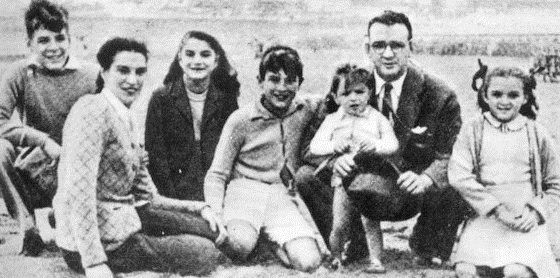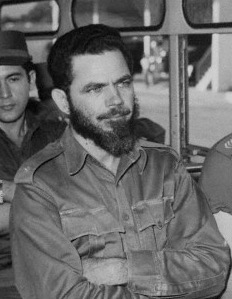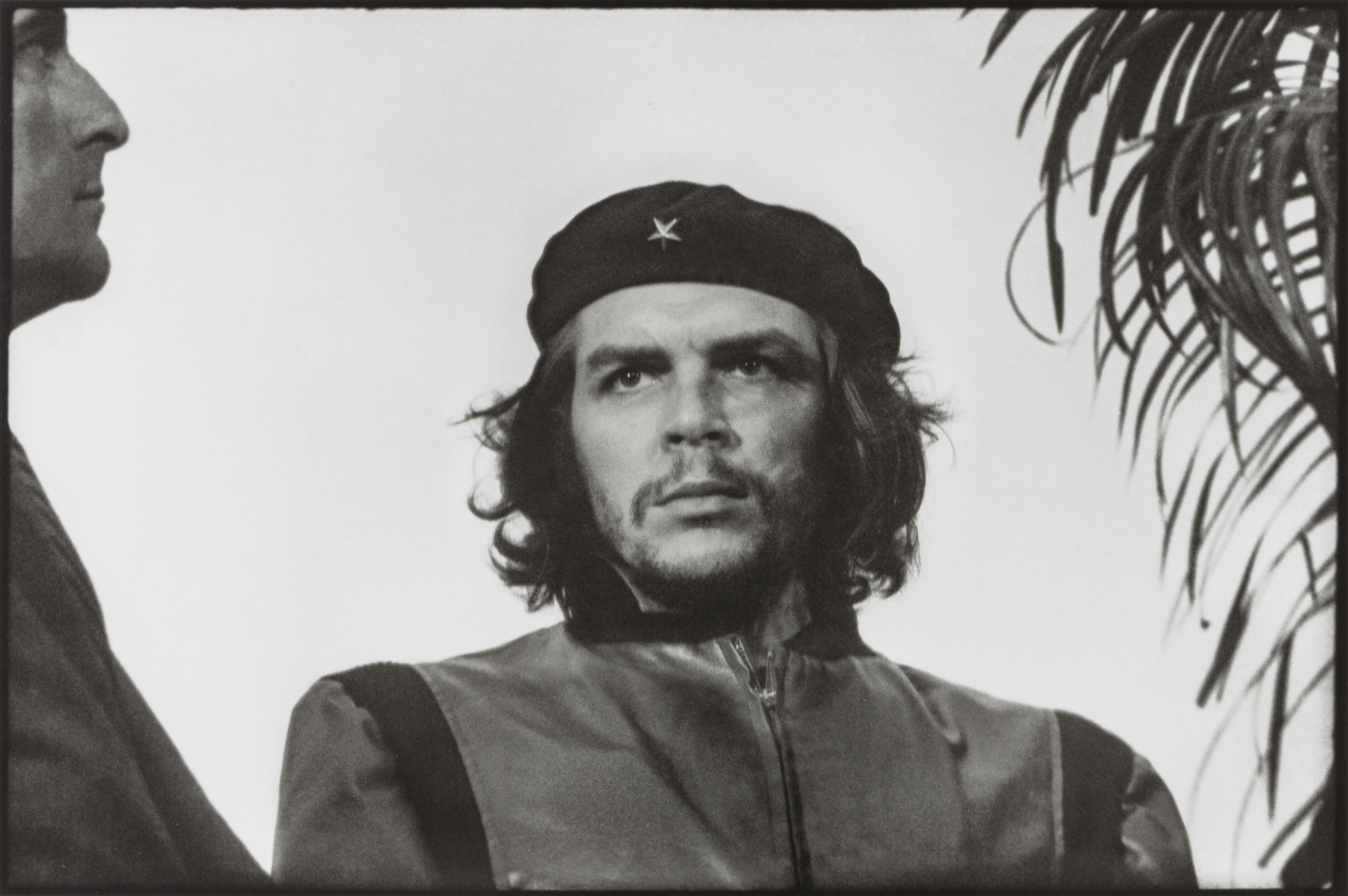|
Che Guevara
Ernesto Che Guevara (; 14 June 1928The date of birth recorded on [//upload.wikimedia.org/wikipedia/commons/7/78/Ernesto_Guevara_Acta_de_Nacimiento.jpg his birth certificate] was 14 June 1928, although one tertiary source, (Julia Constenla, quoted by Jon Lee Anderson), asserts that he was actually born on 14 May of that year. Constenla alleges that she was told by Che's mother, Celia de la Serna, that she was already pregnant when she and Ernesto Guevara Lynch were married and that the date on the birth certificate of their son was forged to make it appear that he was born a month later than the actual date to avoid scandal. (#refAnderson1997, Anderson 1997, pp. 3, 769.) – 9 October 1967) was an Argentine Marxist revolutionary. A major figure of the Cuban Revolution, his stylized visage has become a ubiquitous Counterculture of the 1960s, countercultural symbol of rebellion and global insignia in Che Guevara in popular culture, popular culture. As a young medical student, Gueva ... [...More Info...] [...Related Items...] OR: [Wikipedia] [Google] [Baidu] |
Cuban Missile Crisis
The Cuban Missile Crisis, also known as the October Crisis (of 1962) ( es, Crisis de Octubre) in Cuba, the Caribbean Crisis () in Russia, or the Missile Scare, was a 35-day (16 October – 20 November 1962) confrontation between the United States and the Soviet Union, which escalated into an international crisis when American deployments of missiles in Italy and Turkey were matched by Soviet deployments of similar ballistic missiles in Cuba. Despite the short time frame, the Cuban Missile Crisis remains a defining moment in national security and nuclear war preparation. The confrontation is often considered the closest the Cold War came to escalating into a full-scale nuclear war. In response to the presence of American Jupiter ballistic missiles in Italy and Turkey, the failed Bay of Pigs Invasion of 1961, and Soviet fears of a Cuban drift towards China, Soviet First Secretary Nikita Khrushchev agreed to Cuba's request to place nuclear missiles on the island to deter a ... [...More Info...] [...Related Items...] OR: [Wikipedia] [Google] [Baidu] |
Bay Of Pigs Invasion
The Bay of Pigs Invasion (, sometimes called ''Invasión de Playa Girón'' or ''Batalla de Playa Girón'' after the Playa Girón) was a failed military landing operation on the southwestern coast of Cuba in 1961 by Cuban exiles, covertly financed and directed by the United States. It was aimed at overthrowing Fidel Castro's communist government. The operation took place at the height of the Cold War, and its failure influenced relations between Cuba, the United States, and the Soviet Union. In December 1958, American ally General Fulgencio Batista was deposed by Castro's 26th of July Movement during the Cuban Revolution. Castro nationalized American businesses—including banks, oil refineries, and sugar and coffee plantations—then severed Cuba's formerly close relations with the United States and reached out to its Cold War rival, the Soviet Union. The Central Intelligence Agency (CIA) began planning the overthrow of Castro, which U.S. President Dwight D. Eisenhower ap ... [...More Info...] [...Related Items...] OR: [Wikipedia] [Google] [Baidu] |
Guerrillero Heroico
''Guerrillero Heroico'' ( en, "Heroic Guerrilla Fighter") is an iconic photograph of Marxist revolutionary Che Guevara taken by Alberto Korda. It was captured on March 5, 1960, in Havana, Cuba, at a memorial service for victims of the ''La Coubre'' explosion. By the end of the 1960s, the image, in conjunction with Guevara's subsequent actions and eventual execution, helped solidify the leader as a cultural icon.Communists, Capitalists still buy into Iconic Che Photo, Author says by Brian Byrnes, '''', May 5, 2009 Korda has said that at the moment he shot the picture, he was drawn to Guevara's facial expression, which showed "absolute implacability ... [...More Info...] [...Related Items...] OR: [Wikipedia] [Google] [Baidu] |
Aleida March
Aleida March Torres (born 19 October 1936) is a Cuban revolutionary who was Ernesto "Che" Guevara's second wife, and a member of Fidel Castro's Cuban army. Life Aleida March was an active combatant in Che Guevara's Lightning Campaign in December 1958. She was present at the battle for Las Villas in which Column 8 of the 26th of July Movement was ordered by Fidel Castro to paralyze the occupying military forces of President Fulgencio Batista in the province. Her marriage with Che Guevara is reported to have happened both on 23 March 1959 and 2 June 1959, after his divorce from Hilda Gadea. A civil ceremony was held at La Cabaña military fortress. After the 2 June marriage, Guevara and Aleida went to Tarara, a seaside resort town 20 kilometers from Havana for their honeymoon. The couple had four children together: Aleida, Camilo, Celia, and Ernesto. She is the author of the book ''Evocation'' which is about her falling in love with and marrying Che Guevara, and rais ... [...More Info...] [...Related Items...] OR: [Wikipedia] [Google] [Baidu] |
Congo Crisis
The Congo Crisis (french: Crise congolaise, link=no) was a period of political upheaval and conflict between 1960 and 1965 in the Republic of the Congo (today the Democratic Republic of the Congo). The crisis began almost immediately after the Congo became independent from Belgium and ended, unofficially, with the entire country under the rule of Joseph-Désiré Mobutu. Constituting a series of civil wars, the Congo Crisis was also a proxy conflict in the Cold War, in which the Soviet Union and the United States supported opposing factions. Around 100,000 people are believed to have been killed during the crisis. A nationalist movement in the Belgian Congo demanded the end of colonial rule: this led to the country's independence on 30 June 1960. Minimal preparations had been made and many issues, such as federalism, tribalism, and ethnic nationalism, remained unresolved. In the first week of July, a mutiny broke out in the army and violence erupted between black and whit ... [...More Info...] [...Related Items...] OR: [Wikipedia] [Google] [Baidu] |
Battle Of Santa Clara
The Battle of Santa Clara was a series of events in late December 1958 that led to the capture of the Cuban city of Santa Clara by revolutionaries under the command of Che Guevara. The battle was a decisive victory for the rebels fighting against the regime of General Fulgencio Batista. Within 12 hours of the city's capture, Batista fled Cuba, and Fidel Castro's forces claimed overall victory. It features prominently on the back of the three convertible peso bill. The battle Attack on the city Guevara's column traveled on 28 December 1958 from the coastal port of Caibarién along the road to the town of Camajuaní, which lay between Caibarién and Santa Clara. Their journey was received by cheering crowds of peasants, and Caibarién's capture within a day reinforced the sense among the rebel fighters that overall victory was imminent. Government troops guarding the army garrison at Camajuani deserted their posts without incident, and Guevara's column proceeded to Santa ... [...More Info...] [...Related Items...] OR: [Wikipedia] [Google] [Baidu] |
Battle Of Las Mercedes
The Battle of Las Mercedes (29 July-8 August 1958) was the last battle which occurred during the course of Operation Verano, the summer offensive of 1958 launched by the Batista Government during the Cuban Revolution. The battle was a trap, designed by Cuban General Eulogio Cantillo to lure Fidel Castro's guerrillas into a place where they could be surrounded and destroyed. The battle ended with a cease-fire which Castro proposed and which Cantillo accepted. During the cease-fire, Castro's forces escaped back into the hills. The battle, though technically a victory for the Cuban army, left the army dispirited and demoralized. Castro viewed the result as a victory and soon launched his own offensive. Background Earlier in the month, an amphibious assault from sea by the Cuban army Battalion 18 was crushed by Castro's forces at the Battle of La Plata. Battalion 18 was surrounded and sniped at by the rebel forces. General Cantillo ordered Battalion 17 to cross over the Sierra M ... [...More Info...] [...Related Items...] OR: [Wikipedia] [Google] [Baidu] |
Operation Verano
Operation Verano (, "Operation Summer") was the name given to the summer offensive in 1958 by the Batista government during the Cuban Revolution, known to the rebels as ''La Ofensiva''. The offensive was designed to crush Fidel Castro's revolutionary army, which had been growing in strength in the area of the Sierra Maestra hills since their arrival in Cuba on board the Granma yacht in December 1956. The offensive was met with resistance, notably at the Battle of La Plata and the Battle of Las Mercedes, and failed in its objective. The failure left the Cuban army dispirited and demoralized. Castro viewed it as a victory and soon launched his own offensive. Background Throughout 1957, Fidel Castro's small band of revolutionaries operated out of a mountain base, staging hit and run attacks on the government of Batista. The Cuban army and political leadership did not take these attacks seriously for a long time. The attitude of Batista changed in the Spring of 1958 as Castro star ... [...More Info...] [...Related Items...] OR: [Wikipedia] [Google] [Baidu] |
Attack On El Uvero
The Attack on El Uvero was an armed confrontation between the 26th of July Movement and the Cuban military on May 28, 1957, part of the Cuban Revolution. It was the first major confrontation between the 26th of July Movement, led by Fidel Castro, and the Cuban military, led by Fulgencio Batista, since the latter settled in Sierra Maestra. Battle On May 28, 1957, Fidel Castro made the decision to attack a military garrison that was located in the coastal town of El Uvero, in Sierra Maestra. The Castro guerrillas then had 127 armed and trained combatants who had not yet openly engaged in combat. The combat was particularly bloody because the rebels did not have concealed positions of attack and had to openly expose themselves. After two hours and forty-five minutes of intense fighting, the garrison surrendered. The guerrillas lost 7 men and had 8 wounded, among them Juan Almeida Bosque, while the Cuban military lost 14 men and had 19 wounded. After the fighting had ceased ... [...More Info...] [...Related Items...] OR: [Wikipedia] [Google] [Baidu] |
Cuban Revolution
The Cuban Revolution ( es, Revolución Cubana) was carried out after the 1952 Cuban coup d'état which placed Fulgencio Batista as head of state and the failed mass strike in opposition that followed. After failing to contest Batista in court, Fidel Castro organized an armed attack on the Cuban military's Moncada Barracks. The rebels were arrested and while in prison formed the 26th of July Movement. After gaining amnesty the M-26-7 rebels organized an expedition from Mexico on the Granma yacht to invade Cuba. In the following years the M-26-7 rebel army would slowly defeat the Cuban army in the countryside, while its urban wing would engage in sabotage and rebel army recruitment. Over time the originally critical and ambivalent Popular Socialist Party would come to support the 26th of July Movement in late 1958. By the time the rebels were to oust Batista the revolution was being driven by the Popular Socialist Party, 26th of July Movement, and the Directorio Revolucio ... [...More Info...] [...Related Items...] OR: [Wikipedia] [Google] [Baidu] |
Commanding Officer
The commanding officer (CO) or sometimes, if the incumbent is a general officer, commanding general (CG), is the officer in command of a military unit. The commanding officer has ultimate authority over the unit, and is usually given wide latitude to run the unit as they see fit, within the bounds of military law. In this respect, commanding officers have significant responsibilities (for example, the use of force, finances, equipment, the Geneva Conventions), duties (to higher authority, mission effectiveness, duty of care to personnel), and powers (for example, discipline and punishment of personnel within certain limits of military law). In some countries, commanding officers may be of any commissioned rank. Usually, there are more officers than command positions available, and time spent in command is generally a key aspect of promotion, so the role of commanding officer is highly valued. The commanding officer is often assisted by an executive officer (XO) or second-in-c ... [...More Info...] [...Related Items...] OR: [Wikipedia] [Google] [Baidu] |
National Liberation Army Of Bolivia
National may refer to: Common uses * Nation or country ** Nationality – a ''national'' is a person who is subject to a nation, regardless of whether the person has full rights as a citizen Places in the United States * National, Maryland, census-designated place * National, Nevada, ghost town * National, Utah, ghost town * National, West Virginia, unincorporated community Commerce * National (brand), a brand name of electronic goods from Panasonic * National Benzole (or simply known as National), former petrol station chain in the UK, merged with BP * National Car Rental, an American rental car company * National Energy Systems, a former name of Eco Marine Power * National Entertainment Commission, a former name of the Media Rating Council * National Motor Vehicle Company, Indianapolis, Indiana, USA 1900-1924 * National Supermarkets, a defunct American grocery store chain * National String Instrument Corporation, a guitar company formed to manufacture the first resona ... [...More Info...] [...Related Items...] OR: [Wikipedia] [Google] [Baidu] |




-Che_Guevara-Flikr-emeryjl-388610245_(CC-BY).jpg)

